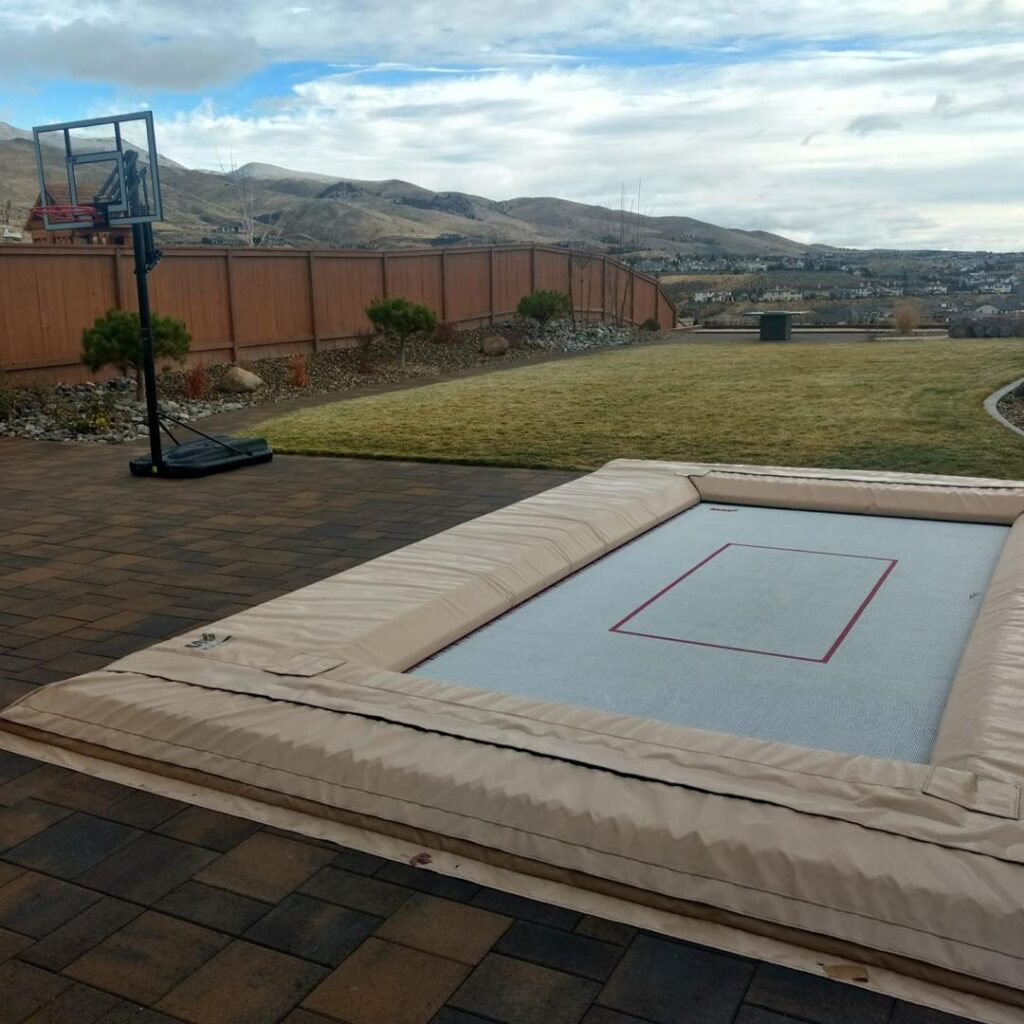
Did you know that the cleanliness of your trampoline bed can affect your bounce performance by up to 20%? Whether you’re an athlete aiming for the perfect jump or a family enjoying garden fun, the condition of your trampoline bed plays a crucial role in your overall experience.
Trampolines are more than just a source of entertainment; they are valuable tools for fitness and sports training. Athletes rely on trampolines for rigorous workouts that enhance their strength, coordination, and flexibility. In recreational settings, trampolines offer a fun and engaging way to exercise, improve cardiovascular health, and enjoy time with loved ones.
However, to get the most out of your trampoline, maintaining a high-quality and clean trampoline bed is essential. A well-maintained trampoline not only ensures peak performance but also significantly contributes to safety and longevity. In this blog, we will explore the importance of keeping your trampoline bed in top condition, discuss the benefits of high-quality materials, and provide practical maintenance tips to help you maximize your trampoline’s performance and lifespan.
Understanding Trampoline Beds
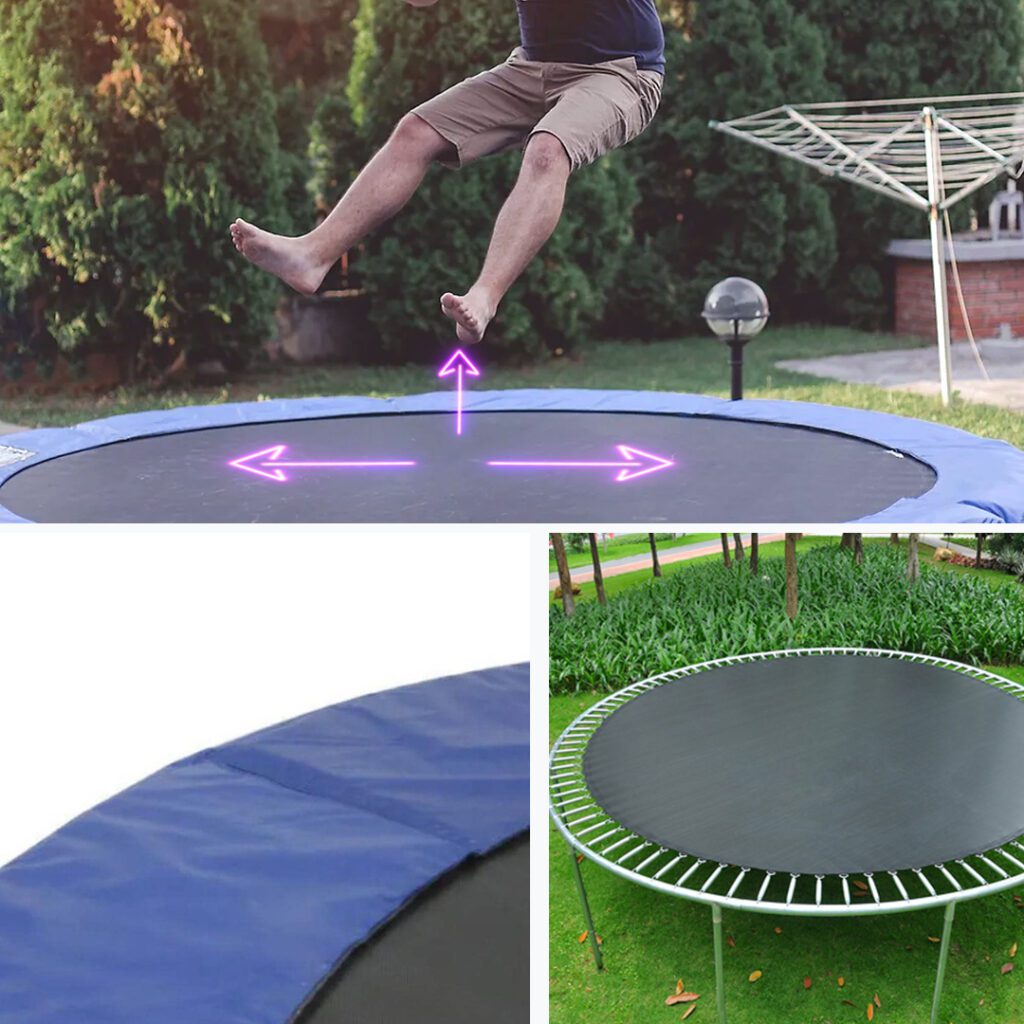
A trampoline bed, also known as a jumping mat, is the central part of a trampoline where users jump. It is typically made from durable, flexible materials designed to withstand significant stress and provide the necessary bounce. The main components of a trampoline bed include:
- Jumping Mat: Usually made of woven polypropylene or similar strong fabric.
- Springs/Bungees: These attach the mat to the frame and provide elasticity.
- Frame: The sturdy metal structure that supports the entire trampoline.
- Padding: Protective covers around the edges to prevent injuries from the springs and frame.
Types of Trampoline Beds
There are various types of trampoline beds available, each catering to different needs and preferences:
- Round Trampoline beds: Round trampoline beds are the flexible, round surfaces on trampolines that are composed of durable materials, such as polypropylene, and are supported by a strong structure and springs to give them their distinctive bounce. They are intended for safe jumping.
- Rectangular Trampoline beds: Rectangular trampoline beds are long, flat surfaces that are frequently used for gymnastics and more complex bouncing methods. They provide stability and a steady bounce.
- Octagonal Trampoline beds: Octagonal trampoline beds are eight-sided surfaces on trampolines, offering a unique shape for stability and controlled bouncing, suitable for various activities and skill levels
Benefits of High-Quality Trampoline Beds
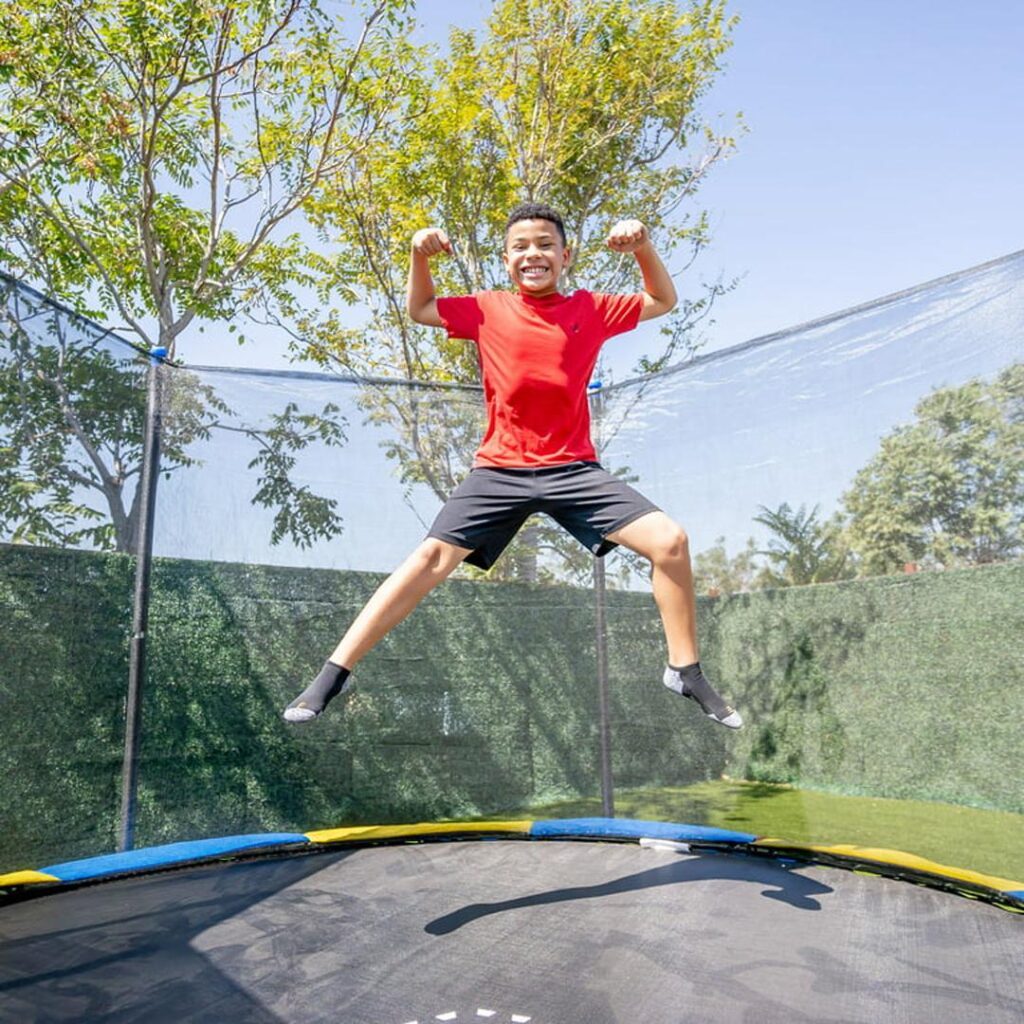
- Enhanced Performance: High-quality trampoline beds significantly improve bounce performance. The materials used in premium trampoline beds are designed to provide consistent elasticity, which is essential for achieving optimal height and control in jumps. Athletes, in particular, benefit from this enhanced performance, as it allows for more precise and reliable training. For instance, competitive trampolines often use advanced fabrics and superior stitching techniques that can handle intense and repeated use without losing their bounce quality.
- Durability and Longevity: Investing in a high-quality trampoline bed ensures that your equipment will last longer. Superior materials, such as high-tensile polypropylene or specialized woven fabrics, are more resistant to wear and tear. This durability is crucial for both recreational and competitive trampolines, as it means fewer replacements and repairs over time. A well-constructed trampoline bed can endure years of use, making it a more economical choice in the long run.
- Safety Considerations: Safety is a paramount concern for anyone using a trampoline. High-quality trampoline beds contribute to a safer jumping experience by providing a stable and reliable surface. Poor-quality beds can develop weak spots or tears that increase the risk of accidents. High-quality materials and construction reduce these risks, ensuring that the trampoline bed can withstand substantial force without compromising safety.
To help you assess the quality of a trampoline bed, here’s a checklist:
- Material Quality: Look for high-tensile fabrics like polypropylene.
- Stitching: Check for reinforced stitching patterns.
- Elasticity: Test the bounce for consistency and responsiveness.
- Durability: Review user testimonials and longevity reports.
- Safety Certifications: Ensure the trampoline meets safety standards.
Not only maintaining high-quality and clean trampoline beds but you should also know how to replace trampoline springs to keep your trampoline in top condition. Learn more
The Impact of Cleanliness on Trampoline Performance
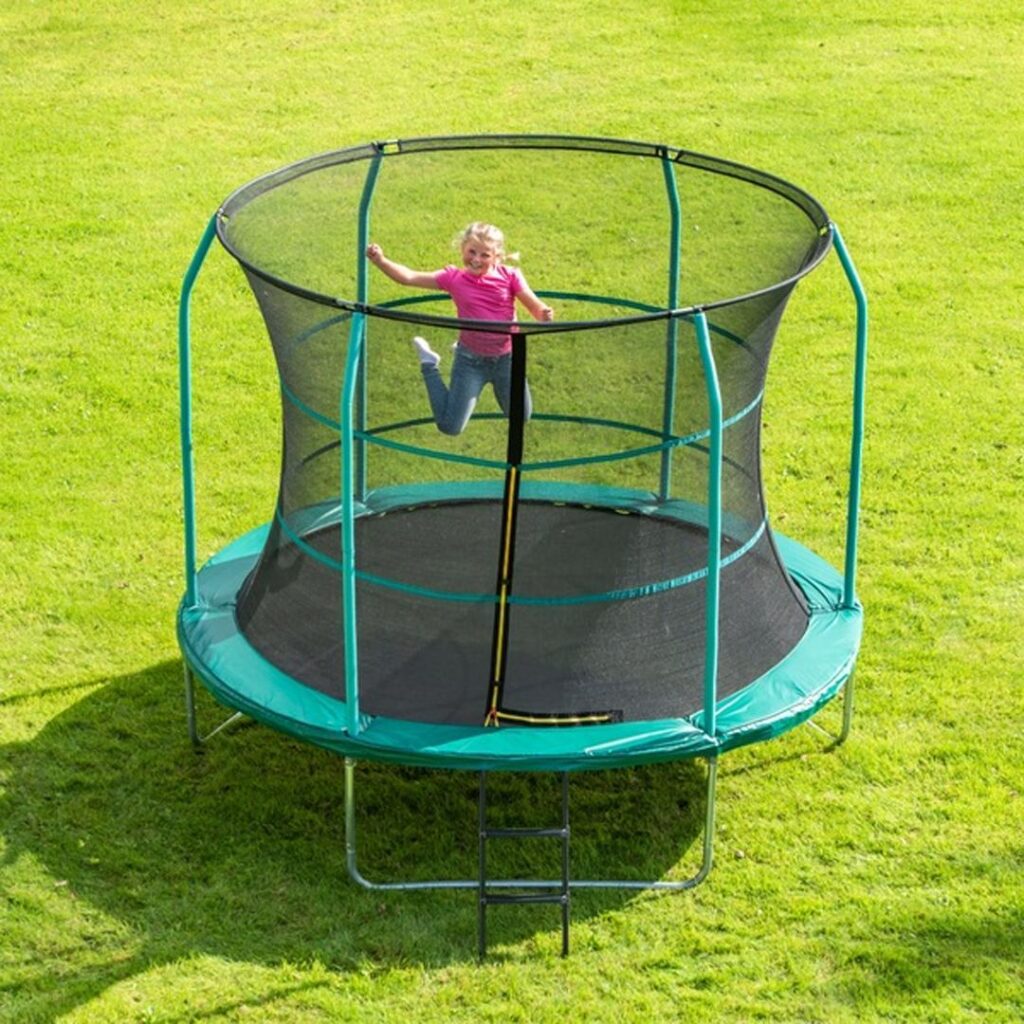
Hygiene and Health:
Maintaining a clean trampoline bed is crucial for both hygiene and health. Over time, trampolines can accumulate dust, dirt, pollen, and even mold, especially if left outdoors. These contaminants can not only affect the bounce quality but also pose health risks, such as allergies and respiratory issues. Regular cleaning helps prevent the buildup of harmful substances, ensuring a safer environment for users.
Performance Factors:
Dirt and debris can significantly impact the performance of your trampoline. When particles accumulate on the trampoline bed, they can reduce its elasticity and responsiveness. This can lead to a less enjoyable and effective jumping experience, as the trampoline won’t provide the same level of bounce. Additionally, debris can cause wear and tear on the fabric, leading to premature damage.
Before-and-After Cleaning Performance Data:
Studies and user experiences have shown noticeable differences in performance before and after cleaning a trampoline bed. For example, in a controlled test, users reported a 15-20% improvement in bounce height and consistency after thoroughly cleaning their trampoline. This demonstrates how important regular maintenance is for optimal performance.
Aesthetic Appeal:
A clean trampoline is more visually appealing and inviting. Whether in a ground setting or a professional gym, a well-maintained trampoline reflects well on its owners and users. It shows a commitment to care and professionalism, which is especially important in settings where appearance and first impressions matter.
Maintenance Tips for Trampoline Beds
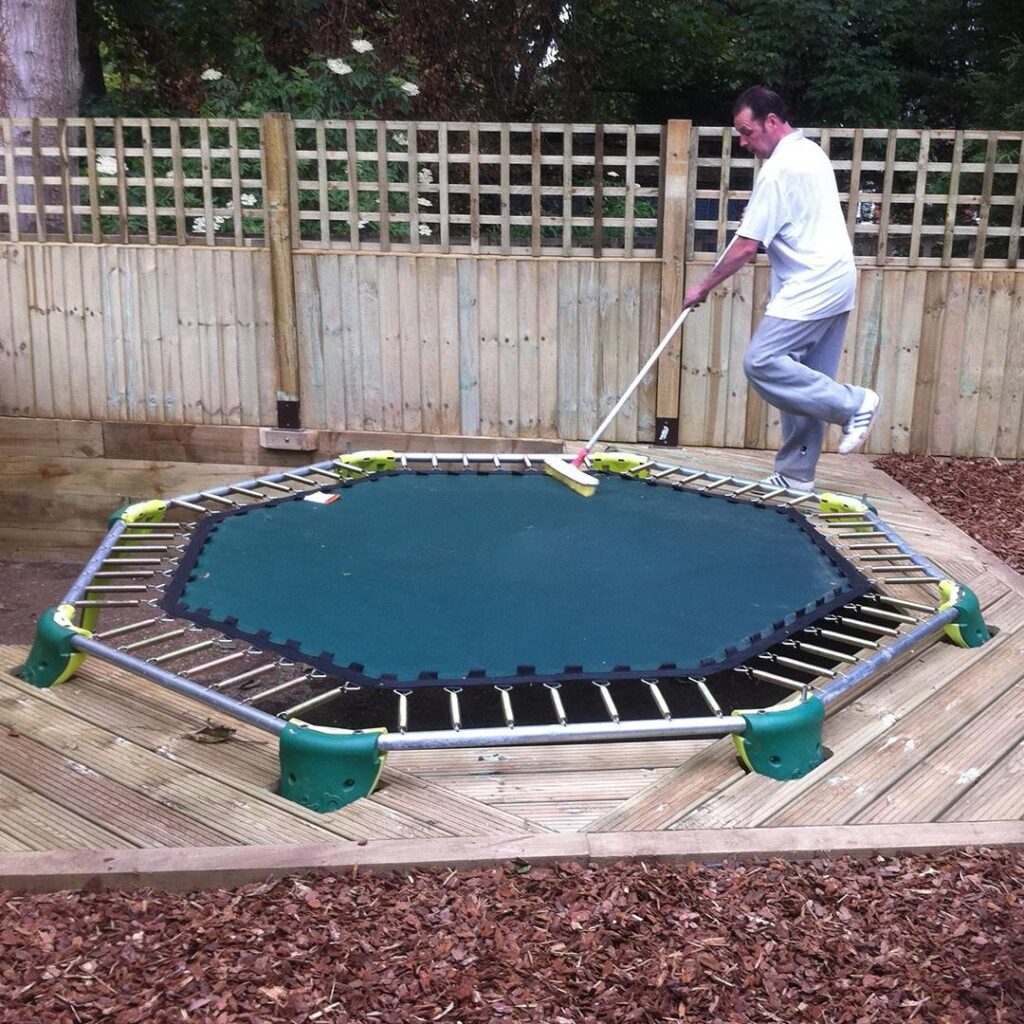
Regular Cleaning Routine
To maintain the optimal performance and longevity of your trampoline bed, it’s essential to establish a regular cleaning routine. Here’s a step-by-step guide to help you keep your trampoline in top condition:
- Debris Removal: Begin by removing any loose debris from the trampoline bed. Use a soft brush or a handheld vacuum to clear away leaves, dust, and other particles that can accumulate on the surface.
- Spot Cleaning: For minor stains or spots, use a mild soap solution and a soft cloth. Gently scrub the affected areas, being careful not to damage the fabric.
- Deep Cleaning: Periodically, give your trampoline a thorough cleaning. Mix a mild detergent with warm water and use a soft-bristled brush to scrub the entire surface of the trampoline bed. Rinse thoroughly with clean water to remove any soap residue.
- Drying: Ensure the trampoline bed is completely dry before using it again. This prevents the growth of mold and mildew, which can degrade the fabric and pose health risks.
Inspection and Repairs
Regular inspections are crucial to maintaining a safe and high performance trampoline. Here’s what to look for and how to address common issues:
- Check for Wear and Tear: Inspect the trampoline bed for any signs of fraying, holes, or weakened areas. If you find any damage, consider patching small holes with a repair kit or replacing the bed if the damage is extensive.
- Inspect Springs and Frame: Examine the springs and frame for rust, corrosion, or damage. Replace any damaged springs immediately, and treat rust spots on the frame with a rust remover and touch-up paint.
- Safety Padding: Ensure that the safety padding around the edges of the trampoline is secure and in good condition. Replace any padding that is worn or damaged to maintain safety.
Checklist for Routine Maintenance Tasks:
- Weekly: Remove debris and spot-clean the trampoline bed.
- Monthly: Conduct a thorough inspection of the trampoline bed, trampoline springs, and frame.
- Seasonally: Perform deep cleaning and apply protective measures as needed.
Protective Measures
Taking preventive steps can help protect your trampoline bed from the elements and extend its lifespan. Here are some tips:
- Use a Weather Cover: When the trampoline is not in use, cover it with a weather-resistant cover. This protects the bed from UV rays, rain, and debris.
- Location Considerations: Place your trampoline in a shaded area or use a UV-protective cover to minimize sun damage, which can weaken the trampoline bed fabric over time.
- Avoid Overloading: Respect the weight limits specified by the manufacturer. Overloading can stretch the fabric and damage the springs, reducing the trampoline’s performance and safety.
Choosing the Right Trampoline Bed
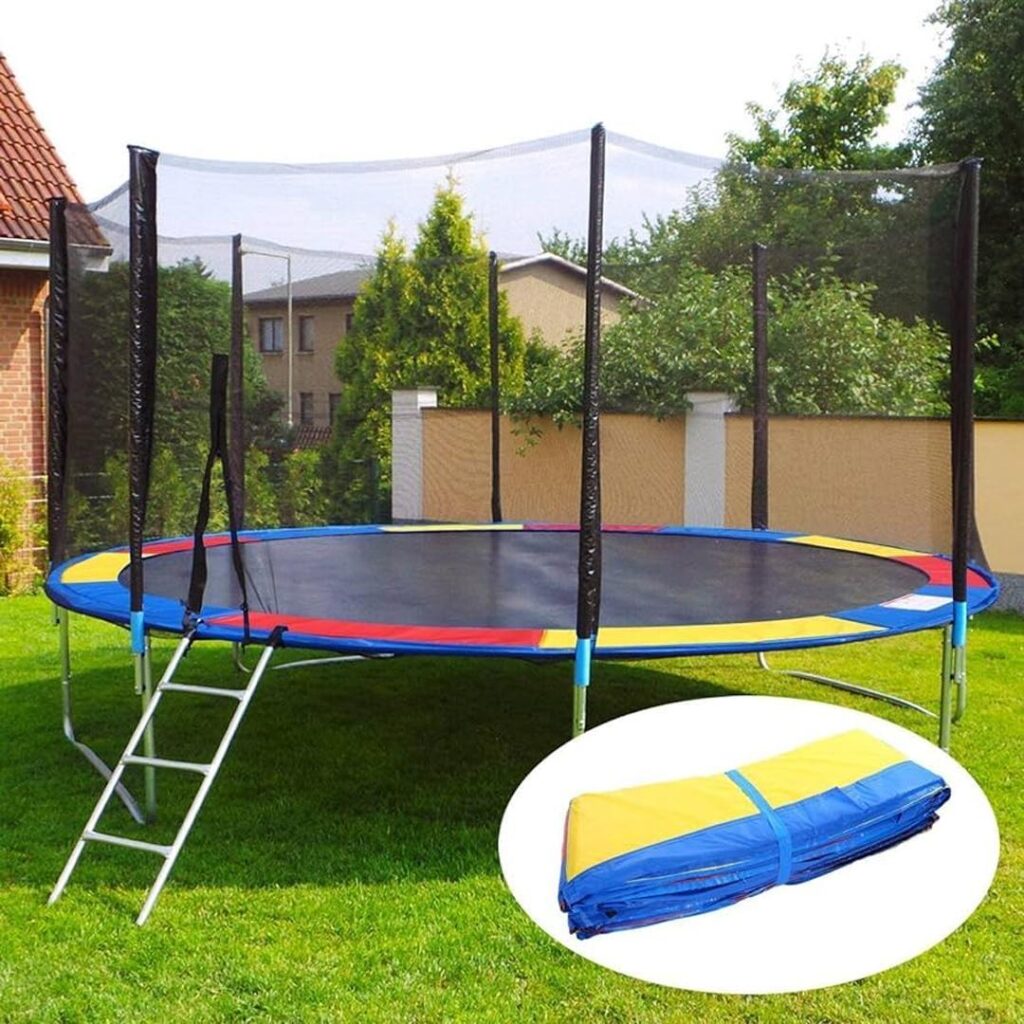
Factors to Consider
Selecting the right trampoline bed involves careful consideration of several key factors, including the material, size, and intended usage.
- Material: Trampoline beds are commonly made from materials like polypropylene, nylon, or mesh fabric. Each material offers unique characteristics in terms of durability, elasticity, and weather resistance. For example, polypropylene is known for its strength and longevity, making it suitable for both recreational and competitive use. Nylon, on the other hand, provides exceptional elasticity and responsiveness, ideal for gymnasts and acrobats seeking precision in their movements.
- Size: Trampoline beds come in various sizes, ranging from small rebounders for individual workouts to large rectangular trampolines beds suitable for families. Consider the available space in your yard or indoor facility and the number of users who will be using the trampoline simultaneously. Opting for a larger size ensures ample room for safe and enjoyable jumping experiences.
- Usage: Determine whether the trampoline will primarily be used for recreational purposes or competitive training. Recreational trampolines are designed for casual enjoyment and typically feature softer bounce surfaces and lower weight capacities. Competitive trampolines, on the other hand, are engineered to meet stringent performance standards and cater to the specific needs of athletes and gymnasts.
Expert Tips: Seek advice from trampoline experts or experienced users to make an informed decision. Consider factors such as brand reputation, warranty coverage, and customer support services when evaluating different trampoline options.
Top Recommendations
To assist you in your search for the perfect trampoline bed, here are some top-rated options across various categories:
- Best Overall: Supertramp Trampolines & Bed to fit the Super Tramp Frog Trampoline– Known for its sturdy construction, ample jumping space, and safety features like reinforced T-sockets and a patented no-gap enclosure.
- Best for Recreational Use: Akrobat Trampoline and beds Designed with safety and innovation in mind, offering a springless design, flexible composite rods, and interactive technology for added fun.
Conclusion
Choosing the right trampoline bed is essential for maximizing enjoyment, safety, and performance. By considering factors such as material, size, and usage, you can make an informed decision that meets your specific needs and preferences.
Whether you opt for a durable polypropylene bed for recreational use or a high-performance nylon bed for competitive training, prioritizing quality ensures long-lasting enjoyment and satisfaction.
Thank you for joining us to explore trampoline maintenance and selection. Remember to prioritize cleanliness, maintenance, and safety for the best trampoline experience. Happy bouncing!


